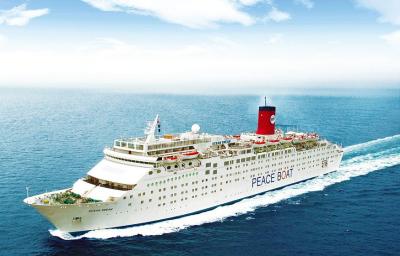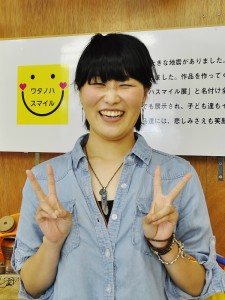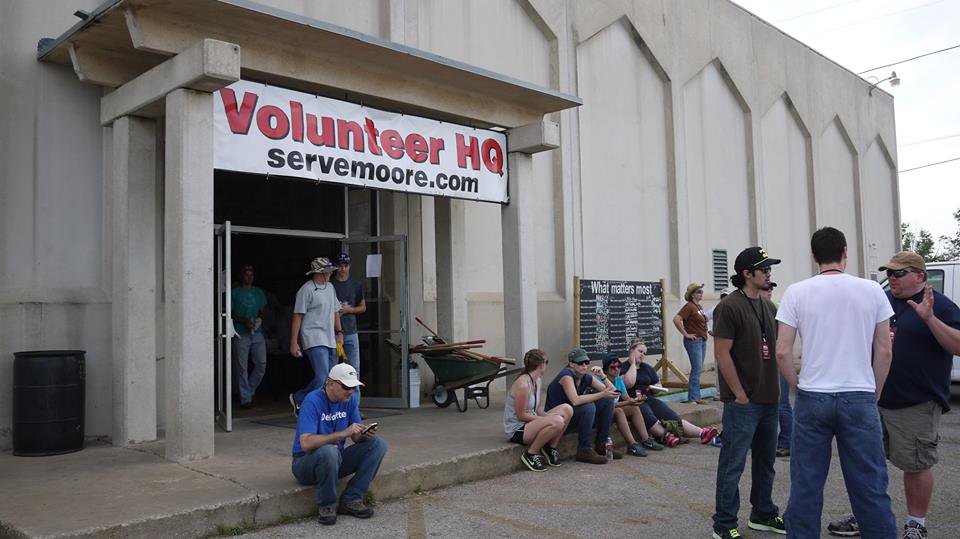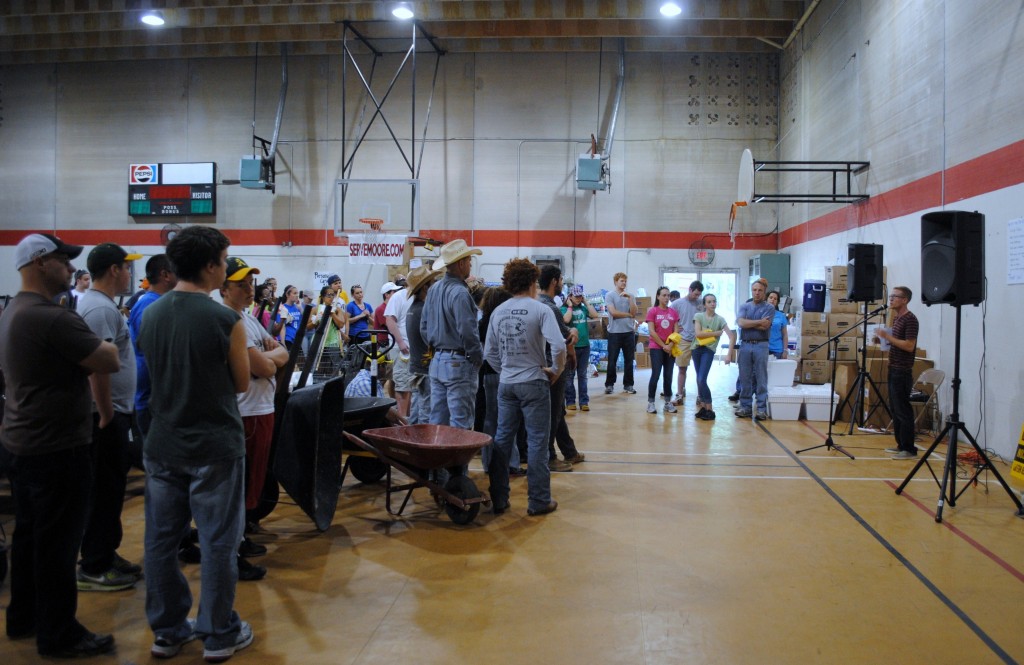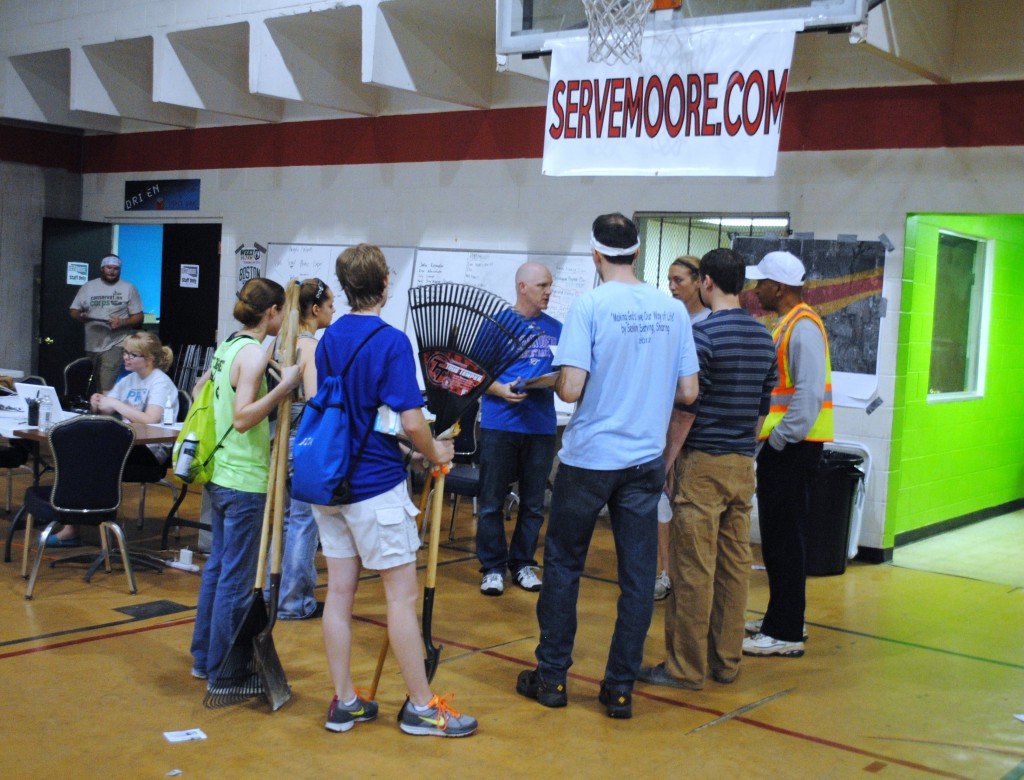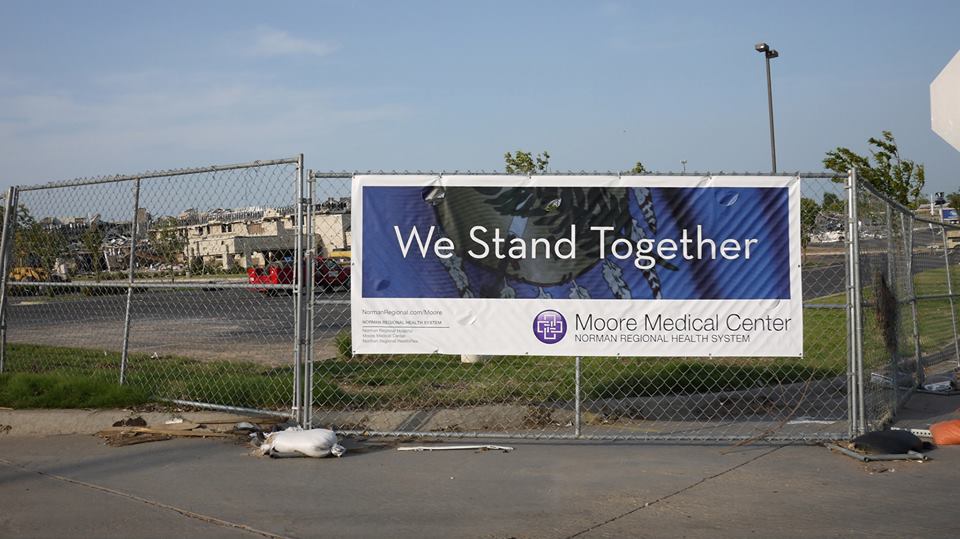
News
Ishinomaki Youth Ambassadors Onboard the 80th Global Voyage
July 26, 2013
This year, Peace Boat celebrates its 30th anniversary. As part of our 80th Global Voyage around-the-world itinerary, Peace Boat’s vessel the “Ocean Dream” will call in at the port of Ishinomaki in October for the first time in its history.
The decision for our ship to call in at Ishinomaki was made after the city decided that revitalizing the port for both commercial and tourism purposes was crucial to the city’s recovery.It also marks 400 years since the first ever diplomatic and trade mission from Japan to Europe, which set sail from Ishinomaki.
We believe that it is essential for the memories, experiences and lessons learnt from the Great East Japan Earthquake and Tsunami to be passed on and shared with audiences both in Japan and within the wider international community.
In order to ensure that the disaster does not fade from our collective memories, the Peace Boat Center in Ishinomaki conducted a search to find two “Ishinomaki Youth Ambassadors” to join the 80th Global Voyage.
These two ambassadors, who were selected in June, will be drawing from their first-hand experiences to share their stories and the lessons they learnt with the 800 passengers onboard, as well as audiences at many ports-of-call around the world.
Shuhei SAKIMURA
Shuhei is a native of Onagawa town, Miyagi prefecture. He belongs to the grass-roots artists’ organization, Onagawa Art Guild Company, which is based in the main shopping district of Onagawa town.
He specializes in designing printed materials and also enjoys making street art under the pseudonym ‘D-BONS’.
At the time of the disaster, Shuhei was working in a factory and evacuated to a park nearby. Making it to high ground just in time, he managed to escape the tsunami; however, he saw many fellow townspeople perish with his own eyes.
In the weeks and months after, he and his friends were able to assist in the emergency assistance operations such as distributing emergency supplies and hot meals to those who had been affected. He also played a hand in the organization of various community-based events aimed at bringing youngsters together in the wake of the disaster.
Shuhei applied to be an Ishinomaki Youth Ambassador because he has the passion to spread positive messages from Tohoku to the world.
He wants not only to express gratitude for the international community’s support, but also to inform people about the present conditions on the ground and to talk about the important things he learnt while living through one of the greatest disasters in recent history.
Shuhei believes that the key to recovery is people. The bonds between individuals, both in Japan and around the world, are what will ensure the long-term and sustainable recovery of the Tohoku region.
To forge these relationships between people in Onagawa and in other countries, Shuhei is planning an art project where he spreads art work from Ishinomaki to audiences around the world.
Sayaka TAKAHASHI
Sayaka, from Ishinomaki City, has been working her regular day-job at a company while pursuing her dream career in theatre.
When the earthquake struck, she was at her workplace and escaped to the highest point in the building. She watched as her hometown was wiped out by the onslaught of waves and saw the familiar landscape change instantly into something unrecognizable.
Living through this gave her a new perspective; “At the end of the day, material wealth is nothing. What is important is to live, to survive,” she says.
She wants to circumnavigate the globe to show off her hometown and bring Ishinomaki to the world. She wants to rebuild the town and the community better and stronger than before, and she believes that travelling aboard Peace Boat, meeting different people and having new encounters can only strengthen her resolve and help bring her a new perspective.
She is currently a member of a local theatre group, where she has a number of roles, not only as an actress, but also as a script-writer and public relations officer.
She plans to host a number of acting work-shops and art projects while onboard.
Peace Boat’s 80th Global Voyage, set sail on July 18th from Yokohama and will be stopping at 20 ports in 19 countries along with 800 passengers.
The ship is scheduled to arrive in Ishinomaki as the voyage’s penultimate port-of-call in October.
Report from Moore – The “Oklahoma Standard”
July 4, 2013
While assessing the affected areas, PBV’s representatives spent some time assisting with administrative tasks at the main Volunteer Reception Center (VRC) in the area, Serve Moore.
Serve Moore was formed in the immediate aftermath of the May 20th tornado by a coalition of local churches in order to accommodate the influx of volunteers from all over the U.S who came to assist those affected by the disaster.
The VRC took in more than 4000 volunteers per day at the peak of its activity and is still regularly taking in over 1000 volunteers, especially on the weekends when it generally attracts more local and out-of-town volunteers.
Upon arrival at the center, volunteers are given an orientation and briefing, split into teams and then dispatched to the work sites with appropriate equipment, including chainsaws in some cases to cut fallen trees. The bulk of the work involves clean-up and debris removal of both public and privately owned land.
With over 12,000 homes and 33,000 people affected by the tornadoes, there is certainly a lot of work to be done.
As these kinds of activities continue, a transition is occurring between the emergency assistance phase and the longer term recovery of the area. A number of Long-Term Recovery Committees have been formed, where local-level stakeholders can convene and discuss what is best for their local areas in the months and years following the tornadoes.
What became clear after even a short time in Oklahoma is the strength and resiliency of the local communities in the face of adversity. According to a number of locals, this kind of collective strength may be explained by the “Oklahoma Standard”.
This concept encompasses the spirit of neighbour helping neighbour, which shone through after the Oklahoma City bombings in 1995, when Oklahomans came together to help one another and stood in solidarity throughout these difficult times.
This could be seen on the ground in Moore, where individuals and groups were working together to help those in need, regardless of who they were, what they believed or where they came from.
In the words of one local volunteer, “When you find yourself in trouble here in Oklahoma, suddenly everyone’s family”.
A Day in Moore, Oklahoma
June 20, 2013
Today we spent the day with our friends from Nechama, a disaster response organization, who we first met and worked with after Hurricane Sandy in New York.
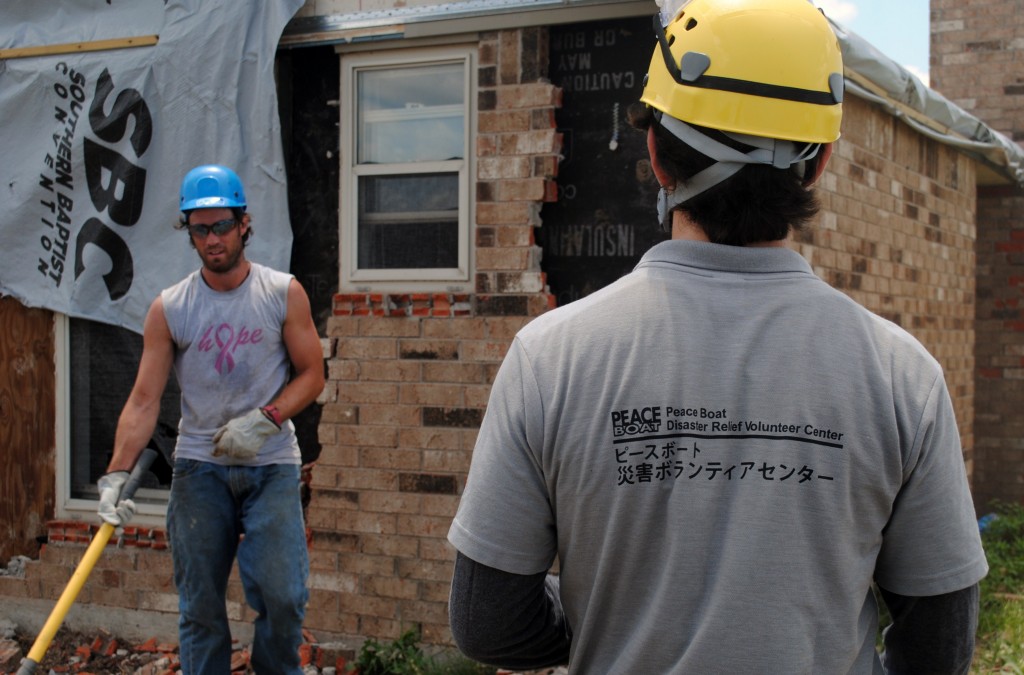
Seeing and experiencing first-hand the kind of work that volunteer organizations are doing in the areas to help local people helped us gain a more holistic and thorough understanding of the situation on the ground.
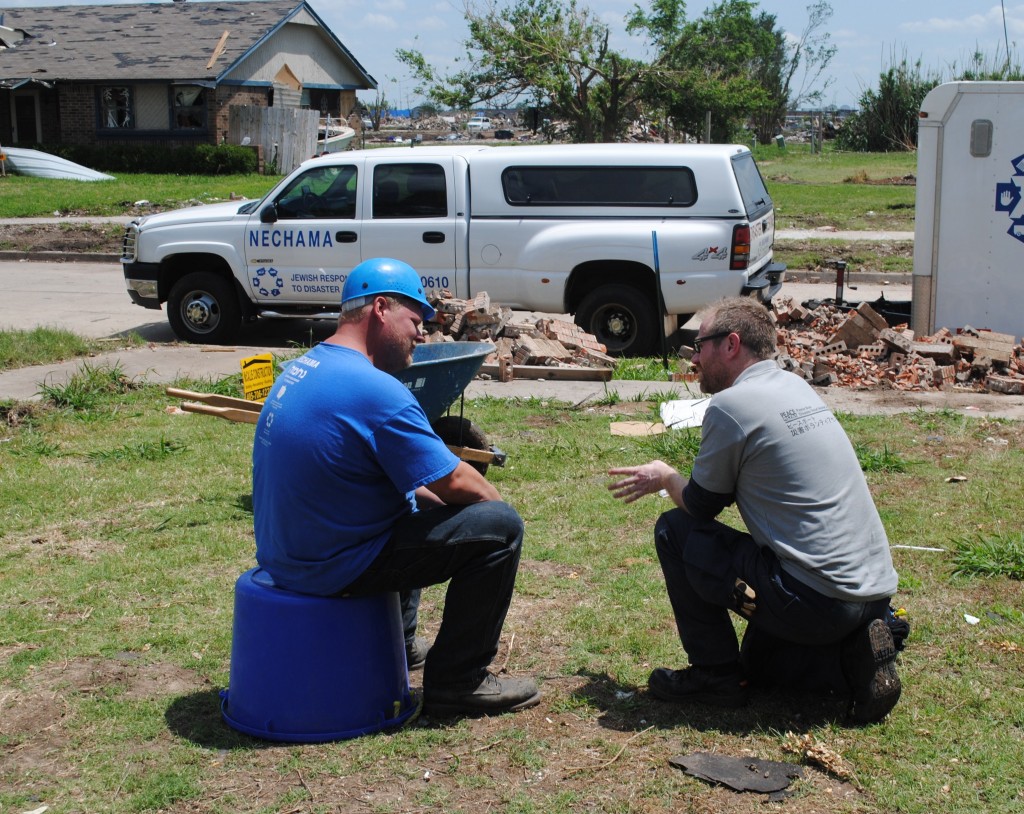
Today, we had a work order for a homeowner living in the Moore area, which was devastated by the EF5 tornado on May 20th.
The work itself consisted of breaking down the external brick wall of a house with sledgehammers, picking up the debris and taking it to the curb. The City of Moore’s services would then remove any tornado-related debris from the curb for the homeowner.
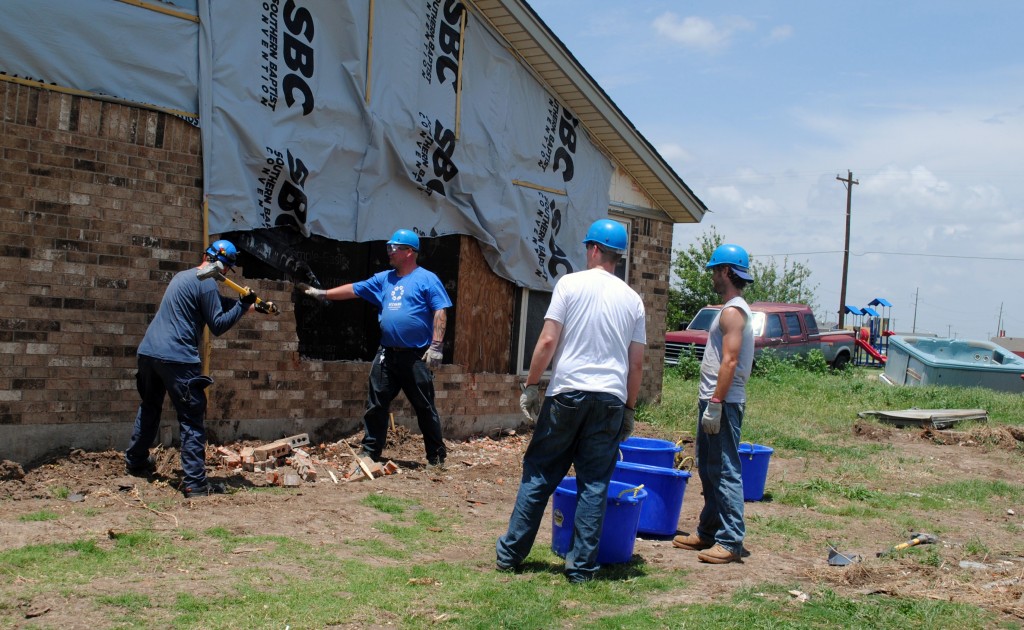
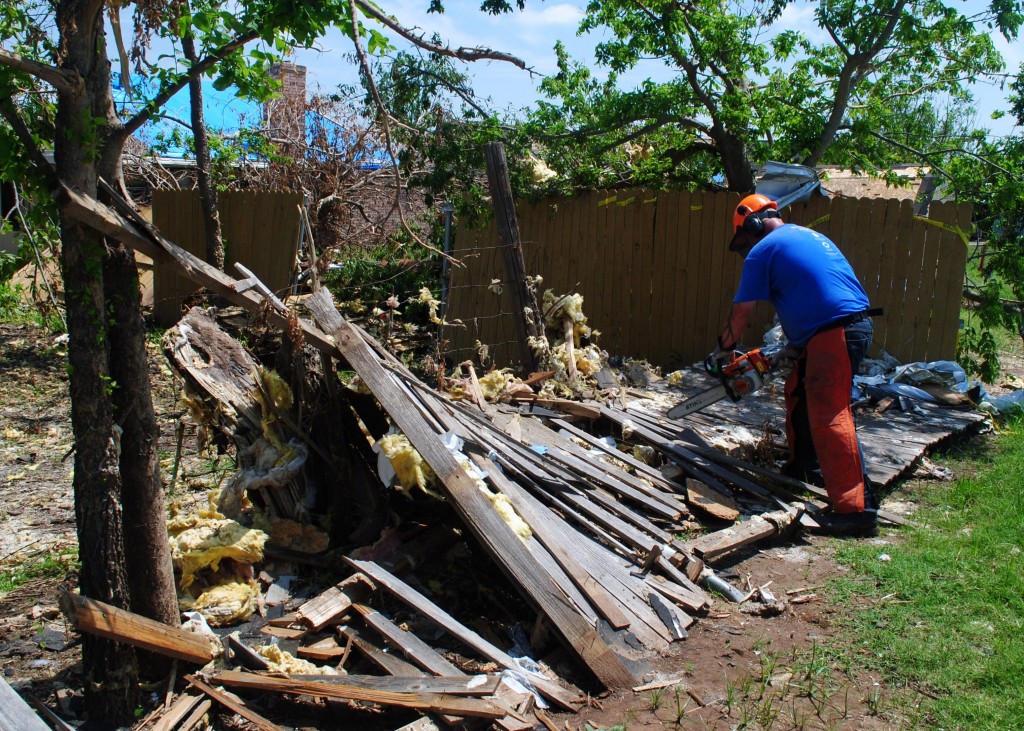
This work order was necessary because the house’s outer wall had been damaged and had to be removed (by hand) so that the homeowner could eventually replace it with a new wall.
When volunteers provide this kind of work, this lightens the financial burden on the homeowner, who may be not be insured or who may not receive adequate monetary compensation.

As temperatures soared to over 35 degrees, we continued to hammer down the wall section by section while listening to country music on the radio.
A group of volunteers from Indiana drove by, distributing food and drinks to other volunteers in the area.
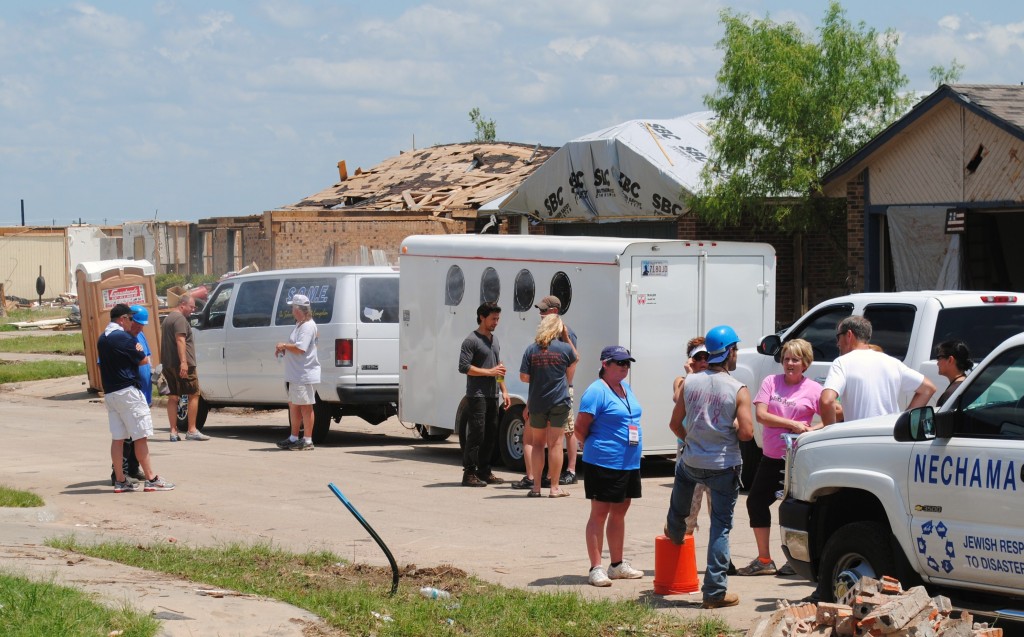
As we started to work on the back area of the house, the music abruptly cut out, interrupted by the following severe weather warning:
Even though the particular area we were working in was not affected by these storms, the announcement served as a reminder that the severe weather conditions were still very much a reality across the region.
As our assessment of the affected area continues, we will provide more updates in the coming days.
Global Disaster Risk Reduction: Sharing the Lessons Learnt from the Great East Japan Earthquake & Tsunami
May 17, 2013
- Japanese NGOs attend the UNISDR conference in Geneva, Switzerland -
The United Nations International Strategy for Disaster Reduction (UNISDR) is hosting the Global Platform for Disaster Reduction (GPDRR) in Geneva, Switzerland on May 19th – 23rd. NGOs with extensive on-the-ground experience with relief and reconstruction efforts in the wake of the Great East Japan Earthquake will be participating in the conference in order to share their experiences and knowledge with the wider international community.
The UNISDR serves as the focal point in the United Nations system for the coordination of disaster risk reduction and has held the GPDRR biennially, where representatives of over 160 countries, civil society groups and researchers come together to build partnerships and exchange information about pressing disaster-related issues. The conference in Geneva is the 4th conference of this initiative and is also a major step in preparations for the 3rd UN World Conference on Disaster Reduction, which is to be held in Sendai, Miyagi prefecture in 2015.
The Hyogo Framework for Action (HFA), which is widely regarded as the international standard for disaster risk reduction, was adopted in 2005 at the 2nd UN World Conference on Disaster Reduction. The framework spans from 2005 to 2015, with five main objectives to be attained over the course of the decade by 2015. The framework was symbolically introduced in Kobe city, which was devastated by the Great Hanshin-Awaji Earthquake, on the 10th anniversary of the disaster.
Despite participation in these initiatives, the reality is that civil society groups still play a relatively minor role in Japan and the role of volunteers in the framework itself is still vastly under-represented and unclear. However, immediately after the Great East Japan Earthquake and Tsunami, there was a powerful response from civil society, where volunteers played (and continue to play) a major part in the relief and reconstruction efforts of the Tohoku region.
The experiences and lessons that these groups learnt have not been adequately shared and have not gained sufficient attention from the international community. In addition, the knowledge gained from the Fukushima nuclear power plant disaster has also yet to be fully disseminated, given the grave consequences of the on-going situation. The period leading up to the 2015 UN World Conference on Disaster Reduction is extremely important to ensure that the experiences from Tohoku, where so many perished and so many lives were disrupted, can reach the global community and contribute to the global disaster risk reduction knowledgebase.
The Japan NGO Center for International Cooperation (JANIC), Church World Service Japan/Asia Pacific and Peace Boat Disaster Relief Volunteer Center will be three of the NGOs in attendance from Japan.
Prior to the conference in Geneva, representatives from over 20 civil society groups gathered in Tokyo to discuss the most crucial lessons that can be shared with the international community. These opinions and recommendations were condensed into one document which will be presented at the conference. Ichio Muto, a farmer from Fukushima prefecture, is also scheduled to attend the conference in order to give a first-hand account of his experiences after the nuclear disaster and will be actively involved in the workshops and events that will be taking place.
The “Post-Hyogo Framework for Action Civil Society Recommendation Proposal Workshop”
May 15, 2013
On May 9th, representatives of over 20 NGOs attended the “Post-Hyogo Framework for Action Civil Society Recommendation Proposal Workshop”.
PBV, JANIC and Church World Service (CWS) Japan organized the event in order to gather the experiences and lessons learnt from Japanese civil society groups post-3.11 and present a unified message at the Global Network of Civil Society for Disaster Reduction (GNDR) conference being held in Geneva this month.
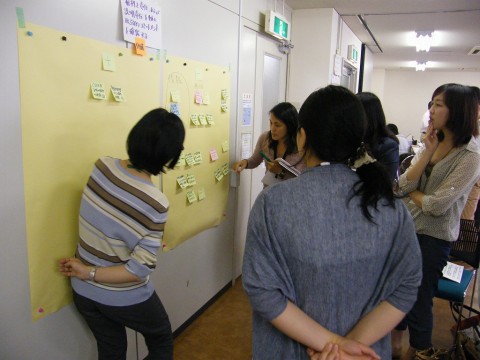
Masakiyo Murai, President of the Hanshin Quake Rehabilitation Center, started the ceremony with a warm welcome and thanked the many representatives for their attendance.
Given that most of the organizations involved in the Great Hanshin-Awaji Earthquake were not able to attend the GNDR conference in the Hague in March, it is crucial that their voices be heard this time, given their collective wealth of knowledge in disaster-related matters stemming from their extensive on-the-ground experiences.
The NPO law was introduced in the wake of the Hanshin-Awaji Earthquake in 1995 to encourage the formation and participation of civil society groups. However, even 10 years later in 2005, a clear role and set of responsibilities had still not been set out for NGOs/NPOs at a national and institutional level.
However, the impact of civil society groups was clearly felt after 3.11, when volunteers played (and continue to play) a crucial role in the relief and reconstruction efforts of the Tohoku. The UN-sponsored World Conference on Disaster Reduction will be held in March 2015 in Sendai, Miyagi prefecture.
This workshop is part of the extensive preparations being made for this conference, where Japanese civil society must stand up and have their voices heard.
The objective of this workshop was to present a set of proposals to the UNISDR (United Nations International Strategy for Disaster Reduction) from Japanese civil society at the GNDR conference in Geneva in May
JANIC’s Makoto Tajima, the Chief Coordinator of the Taskforce for Disaster Response, gave a brief account of the previous GNDR meeting which took place in the Hague.
This workshop provided a platform for NGOs to incorporate their own experiences and lessons learnt into the proposal.
The FAJ (Facilitators Association of Japan) ran the workshop and split the participants into 3 groups in order to systematically and methodically process the vast amounts of information that emerged from the lively discussions. The ultimate goal of this process was to condense all of the information into one document.
CWS Japan’s Yoko Ito played an active role in organizing the event (pictured above)
The recommendations which Japanese Civil Society Organizations wished to bring to the table, especially those appropriate for a global audience, gradually began to emerge as the afternoon progressed and eventually, all parties had a chance to have their say.
After all of this information has been condensed into one document, it will be reviewed by all relevant parties, edited and then translated into English before being presented to the GNDR.
The purpose of the conference taking place in Geneva is to gather the recommendations and proposals from Civil Society Organizations from all around the world.
PBV’s director Takashi Yamamoto will be attending this conference and will be helping to present the results of this workshop to the international community.




